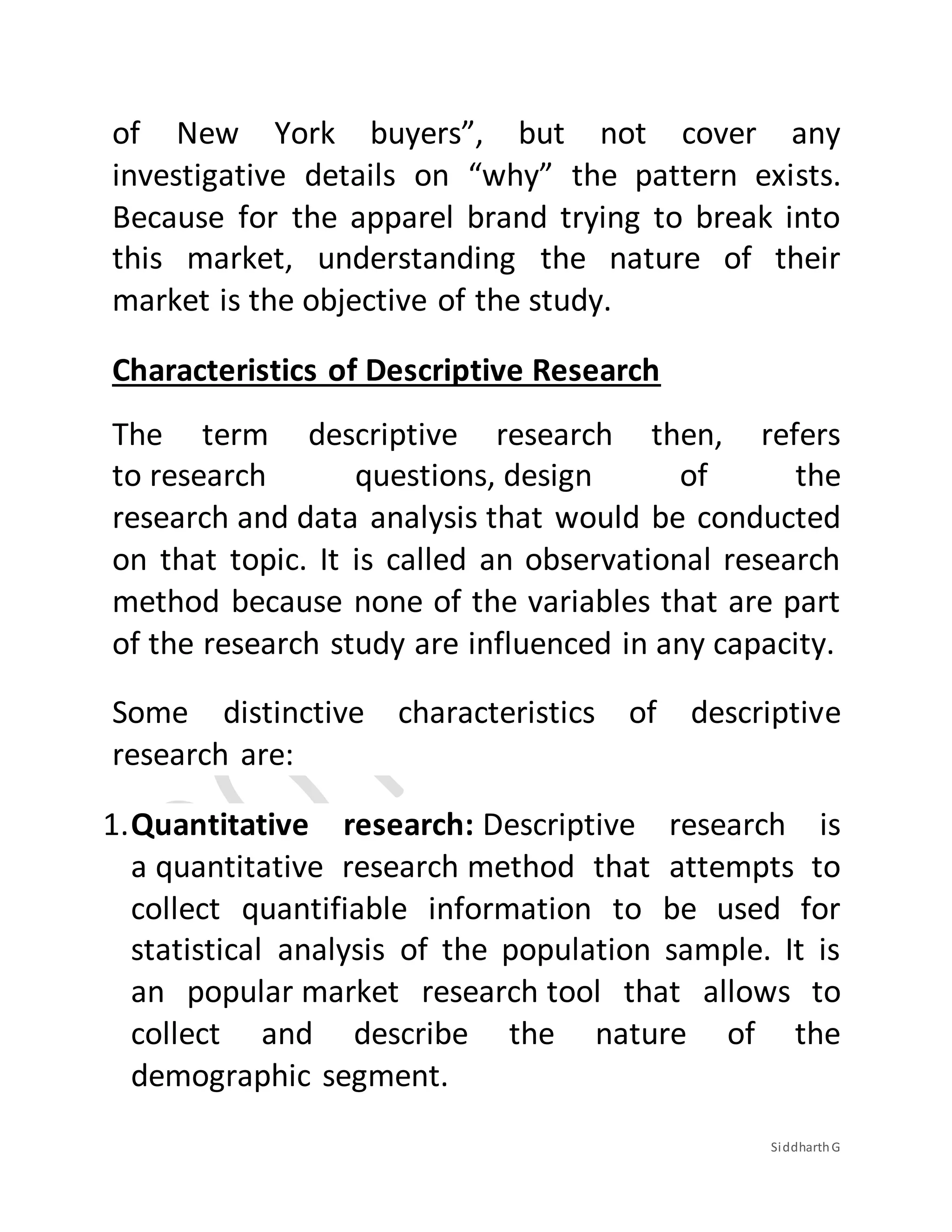Descriptive research describes the characteristics of a population or phenomenon being studied without determining why something occurs. It focuses on what is happening rather than why. There are three main methods: observational research which collects quantitative and qualitative data; case studies which provide in-depth analysis of individuals or groups; and surveys which gather feedback through questionnaires. Descriptive research is used to understand market trends, compare groups, validate existing conditions, and conduct research at different times. It provides essential information about what is happening without determining causation.












